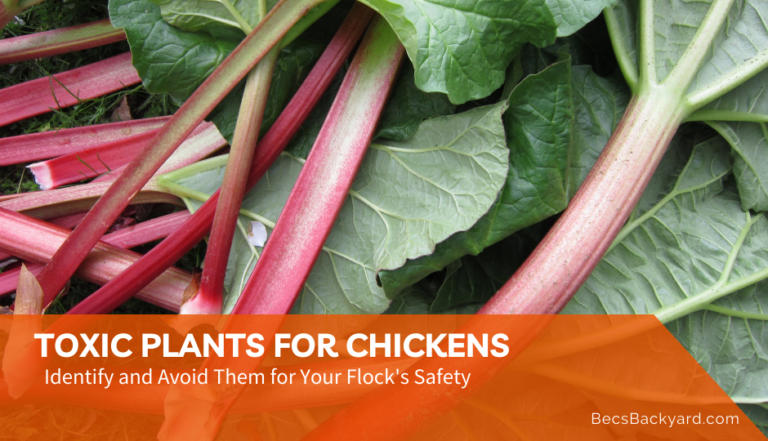What is the Exterior of an Egg made of: Understanding its Structure and Function
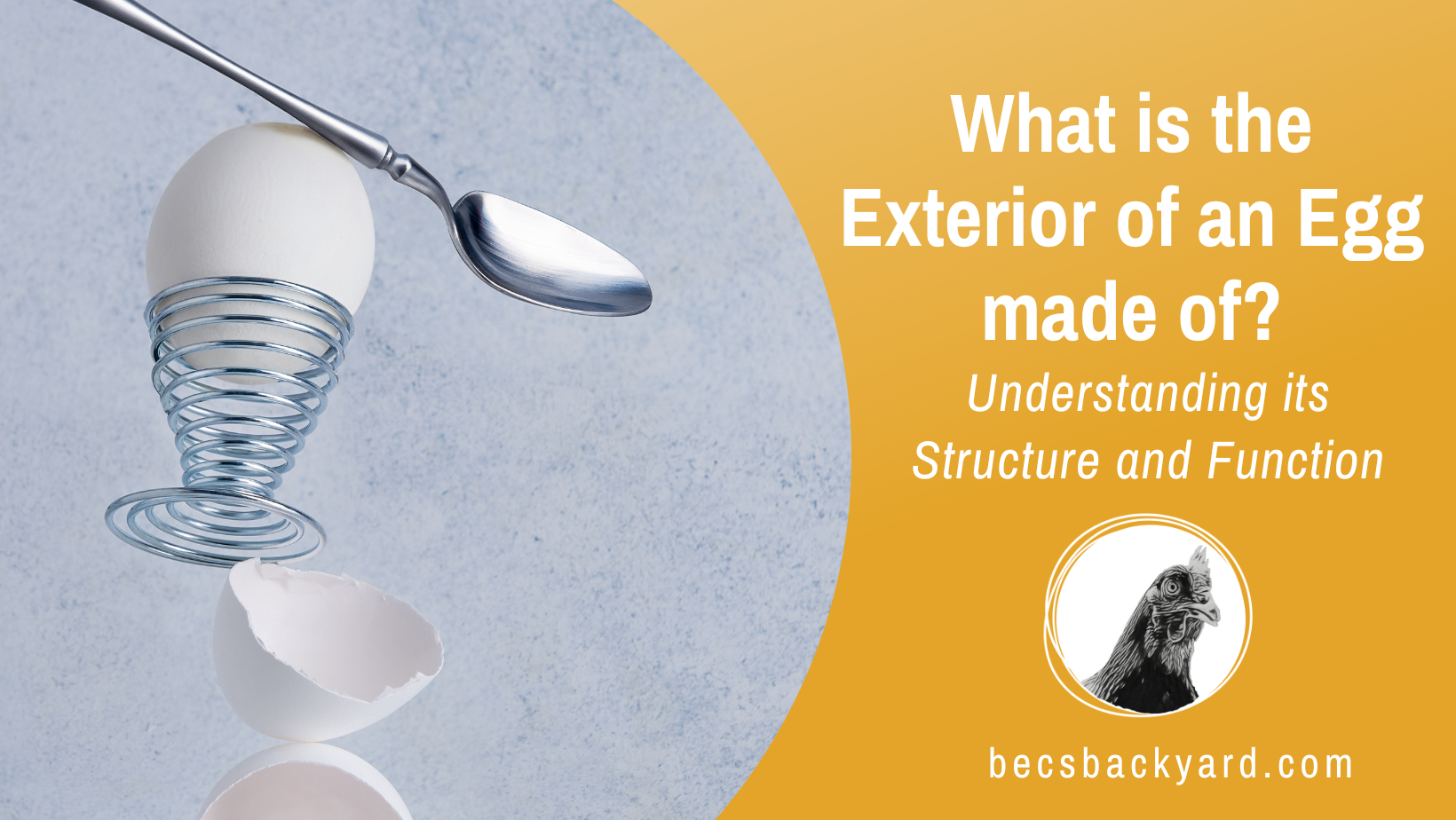
Eggs are a staple food in households around the world, used in a variety of dishes from breakfast to dinner. While the interior of an egg is well-known and often consumed, the exterior of an egg is just as important. The exterior of an egg, or the shell, serves as a protective layer for the egg and plays a crucial role in preserving its contents.
The shell of an egg is made up of calcium carbonate crystals and is covered with thousands of tiny pores, allowing air and moisture to pass through. The texture of the shell can vary from smooth to bumpy, depending on the breed of the chicken that laid the egg. Additionally, the color of the shell can vary from white to brown, again depending on the breed of the chicken. Despite these differences, the function of the shell remains the same – to protect the egg from damage and contamination.
In this article, we will explore the exterior of an egg in more detail, including its composition, function, and how it can impact the quality of the egg. Whether you are a professional chef or a home cook, understanding the importance of the eggshell can help you create better dishes and ensure that you are using the best quality eggs possible.
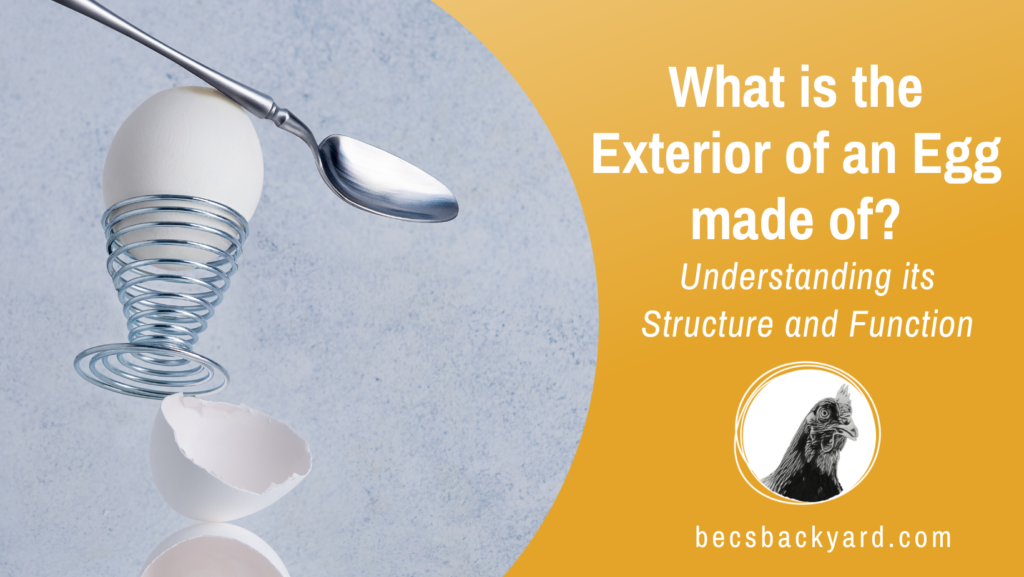
Exterior of an Egg : Eggshell Structure and Composition
The eggshell is a vital component of the egg, providing protection to the developing embryo and its contents. The eggshell is made up of several layers of calcium carbonate crystals and an organic matrix. In this section, we will discuss the structure and composition of the eggshell.
Calcium Carbonate Crystals
The eggshell is primarily composed of calcium carbonate crystals. The crystals are arranged in a lattice structure that provides the eggshell with its strength. The crystals are formed when calcium ions and carbonate ions combine in the presence of the organic matrix. The lattice structure of the crystals makes the eggshell resistant to compression and fracture.
Organic Matrix
The organic matrix is a protein layer that surrounds the calcium carbonate crystals. It makes up about 10% of the eggshell’s weight. The organic matrix is responsible for the regulation of calcium carbonate crystal formation and affects the size and shape of the crystals. The organic matrix also contributes to the eggshell’s flexibility and toughness.
Pores
The eggshell has several thousand microscopic pores that allow for gas exchange between the developing embryo and the outside environment. The pores are essential for the survival of the embryo, as they allow for the exchange of oxygen and carbon dioxide. The pores also allow for the release of water vapor, which helps to prevent the accumulation of excess moisture inside the egg.
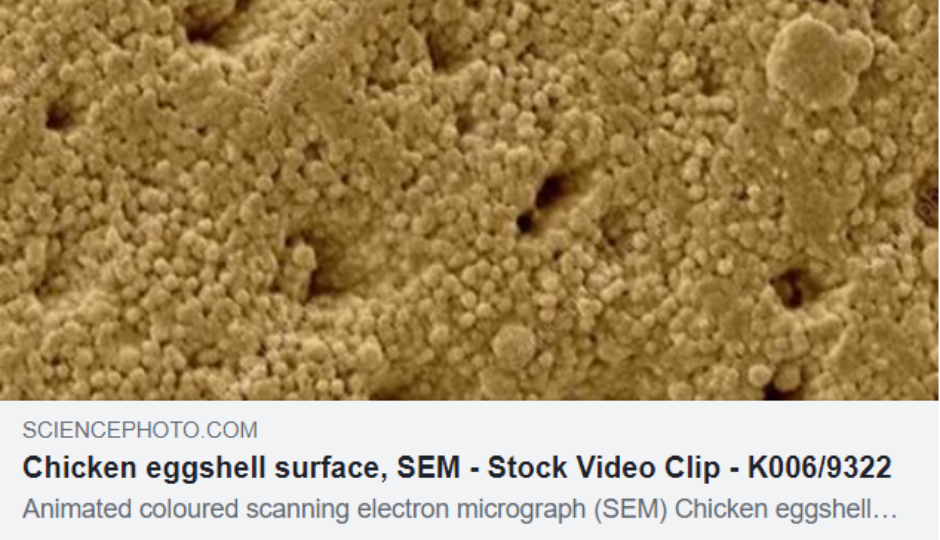
Gas Exchange
The eggshell’s pores allow for gas exchange between the developing embryo and the outside environment. Oxygen enters the egg through the pores, and carbon dioxide and water vapor exit the egg through the same pores. The rate of gas exchange is influenced by several factors, including temperature, humidity, and the size of the pores.
In conclusion, the eggshell is a complex structure that provides vital protection to the developing embryo and its contents. The eggshell is primarily composed of calcium carbonate crystals and an organic matrix, and it has several thousand microscopic pores that allow for gas exchange between the developing embryo and the outside environment.
Coloration of Eggshells
Eggshells come in a variety of colors, from white to brown to blue-green. The coloration of eggshells is determined by a combination of genetic and environmental factors. In this section, we will explore the pigmentation process that gives eggs their color and the species-specific colors of eggshells.
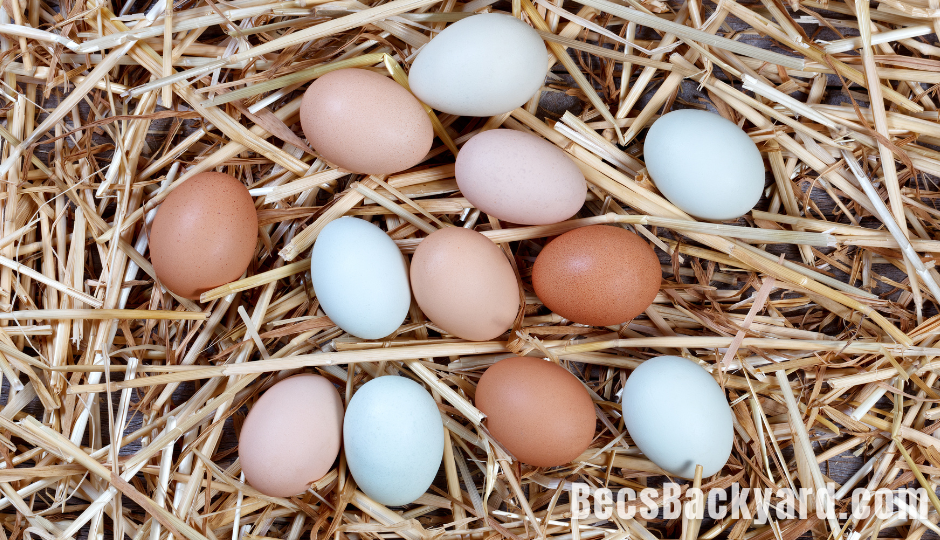
Pigmentation Process
The color of an eggshell is determined by pigments that are deposited on the surface of the shell during the formation process. The two primary pigments responsible for eggshell coloration are protoporphyrin and biliverdin. Protoporphyrin is responsible for the reddish-brown coloration of eggshells, while biliverdin produces a blue-green color.
The pigments are deposited on the surface of the eggshell as it moves through the hen’s oviduct. The amount and timing of pigment deposition are influenced by genetic and environmental factors, including the hen’s diet and stress levels.
Species-Specific Colors
Different species of birds produce eggs with different colors and patterns. For example, chicken eggs can be white, brown, or blue-green, while duck eggs are typically white or blue-green. The coloration of eggshells can also vary within a species, depending on the breed of the bird.
Here are some examples of species-specific eggshell colors:
Chicken: White Leghorn chickens produce white eggs, while Rhode Island Red chickens produce brown eggs.
Duck : Pekin ducks produce white eggs, while Muscovy ducks produce eggs that range from white to dark brown.
Quail : Japanese quail produce eggs that are speckled with brown spots.
Emu : Emu eggs are dark green in color.
The coloration of eggshells is determined by a combination of genetic and environmental factors. The pigmentation process that gives eggs their color involves the deposition of protoporphyrin and biliverdin on the surface of the eggshell. Different species of birds produce eggs with different colors and patterns, making eggshells a fascinating and diverse aspect of avian biology.
Eggshell Strength and Thickness
The strength and thickness of an eggshell are crucial factors that determine the quality of an egg. Eggshells need to be strong enough to withstand shipping and handling without breaking or cracking. The egg industry has set a standard that eggs must withstand a force of 35 Newtons or 3.5 kgf (kilogram-force).
Eggshell strength can be measured in two ways: eggshell thickness and eggshell strength. Eggshell thickness is measured by the distance between the inner and outer membranes of the shell. Eggshell strength is measured by the force required to crack the shell. Both of these factors are important in determining the overall quality of an egg.
According to the results of eggshell strength testing, there is no universal industry standard for the testing of eggshell strength. However, it is widely accepted that eggs need to withstand a force of 35 Newtons or 3.5 kgf (kilogram-force) to survive shipping and handling.
Studies have shown that there is a correlation between eggshell strength and thickness. The thicker the eggshell, the stronger it tends to be. Almquist and Burmester (1934) reported a coefficient of correlation of + .7609 ± 0.0386 between the breaking strength and thickness of the eggshell. These investigators measured the weight applied to a strip of shell held in a base of Wood’s metal.
It is important to note that the physical parameters of eggshell strength and thickness are not influenced by season. Tyler and Geake (1964b) concluded that the physical parameters of strength and thickness are not influenced by season. However, they did find that shell strength varies between birds.
Eggshell strength and thickness are important factors in determining the quality of an egg. Eggs must be able to withstand a force of 35 Newtons or 3.5 kgf (kilogram-force) to survive shipping and handling. Eggshell thickness and strength are correlated, with thicker shells tending to be stronger. The physical parameters of eggshell strength and thickness are not influenced by season but may vary between birds.
Egg Shape and Size Variations
The exterior of an egg can vary in shape and size depending on the species of bird that laid it. Eggs can range from perfectly oval to more elongated or asymmetrical shapes. Researchers have found that birds may have evolved elliptical or asymmetric eggs to maintain streamlined bodies for flight.
Egg shape can also be affected by the size of the bird’s cloaca, which is the opening through which the egg is laid. Birds with a larger cloaca may lay rounder eggs, while those with a smaller cloaca may lay more elongated eggs.
In addition to shape, egg size can also vary greatly between species. The table below shows the average size of eggs for some common bird species:
| Bird Species | Average Egg Size (inches) |
|---|---|
| Pigeon | 1.3 x 1.0 |
| Chicken | 2.5 x 1.8 |
| Duck | 2.5 x 1.9 |
| Goose | 3.5 x 2.5 |
| Ostrich | 6.0 x 4.5 |
It’s important to note that egg size can also vary within a species depending on factors such as the age and health of the bird, as well as environmental conditions during egg formation.
Overall, the shape and size of an egg can provide insight into the biology and behavior of the bird species that laid it. While there may be variations, eggs generally have a smooth and clean exterior with one end slightly larger than the other. Any eggs with unusual shapes or textures should be discarded for quality and safety reasons.
Eggshell and Embryo Development
The eggshell is an essential part of the egg, providing physical protection, enabling gas exchange, and serving as a calcium reserve. The eggshell is composed primarily of calcium carbonate and is porous, allowing gases to pass through it. The eggshell also separates the developing embryo from its environment and modulates the movement of water and gases into and out of the egg.
Chalaza
The chalaza is a rope-like structure that anchors the yolk in the center of the egg. It is formed from twisted strands of egg white and is visible as a cloudy, white mass. The chalaza helps to keep the yolk in the center of the egg, preventing it from touching the shell and potentially rupturing during incubation. The chalaza also provides a source of nutrients for the developing embryo.
Air Cell
As the egg ages, the air cell inside it grows larger. The air cell is located at the blunt end of the egg and is formed as the contents of the egg cool and contract after laying. The air cell provides the embryo with the air it needs to breathe during the later stages of development. It also serves as an indicator of freshness, as the size of the air cell increases as the egg ages.
The eggshell plays a crucial role in the development of the embryo, providing physical protection, enabling gas exchange, and serving as a calcium reserve. The chalaza anchors the yolk in the center of the egg, while the air cell provides the embryo with the air it needs to breathe during the later stages of development. Understanding the structure and function of the eggshell is essential for successful egg incubation and hatching.
Eggshell and Environmental Factors
The eggshell is a crucial part of the egg that protects the egg’s contents from the outside environment. It is made up of calcium carbonate and other minerals, and its thickness and strength can be affected by various environmental factors.
Temperature and Humidity
The temperature and humidity of the environment in which the egg is laid can have a significant impact on the quality of the eggshell. If the temperature is too high or too low, or if the humidity is too high, the eggshell may become thinner and weaker. This can lead to a greater risk of breakage during transport and storage.
Diet and Nutrition
The diet and nutrition of the hen can also affect the quality of the eggshell. Hens that are not provided with enough calcium in their diet may produce eggs with thinner shells. Similarly, hens that are not given enough vitamin D may also produce eggs with weaker shells.
To ensure that hens produce eggs with strong and healthy shells, it is important to provide them with a balanced diet that includes sufficient amounts of calcium and vitamin D. Additionally, maintaining a clean and sanitary environment for the hens can also help to improve the quality of the eggshells they produce.
In conclusion, the eggshell is a critical component of the egg that protects its contents from the outside environment. Environmental factors such as temperature, humidity, and diet can all affect the quality of the eggshell, and it is important to take steps to ensure that hens are provided with the necessary conditions to produce eggs with strong and healthy shells.
Frequently Asked Questions
What are the different parts of an egg?
An egg is comprised of several parts, including the shell, the albumen (or egg white), and the yolk. The eggshell is the outermost layer and is typically white or brown in color. The albumen is the clear, viscous substance that surrounds the yolk, and the yolk is the yellow or orange center of the egg.
What is the function of the shell of an egg?
The shell of an egg serves to protect the delicate contents inside from damage and contamination. It also helps to regulate the exchange of gases and moisture between the egg and its environment.
What is the albumen of an egg?
The albumen, also known as the egg white, is the clear, viscous substance that surrounds the yolk of an egg. It is made up of water, protein, and other nutrients.
What is the function of the albumen of an egg?
The albumen serves to protect the yolk and provide it with nutrients, as well as to provide structure and stability to the egg.
What is the chalaza of an egg?
The chalaza is a rope-like structure that helps to anchor the yolk in place within the egg. It is made up of twisted strands of albumen and is visible as a white, stringy substance in the egg white.
The Shell-abration Continues: Cracking the Case of the Egg’s Exterior
The exterior of an egg is made up of several layers that serve different functions. The shell is the outermost layer and provides protection to the developing embryo. The shell membrane is a thin layer that helps regulate the exchange of gases and moisture between the egg and its environment. The cuticle is a waxy layer that helps prevent bacterial contamination. Understanding the structure and function of the egg’s exterior can help us appreciate the complexity of this common food item and also inform how we handle and store eggs for optimal safety and freshness.


